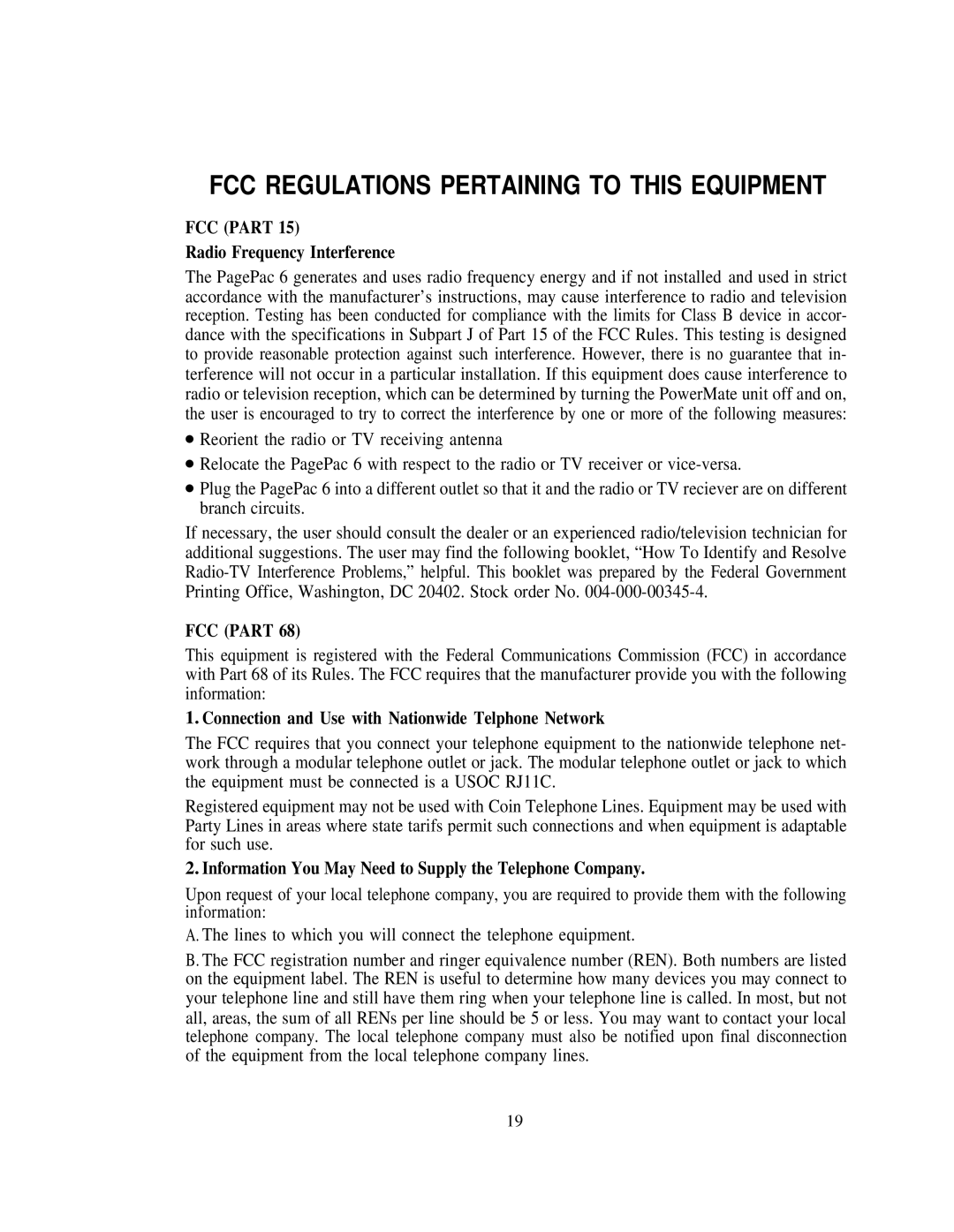FCC REGULATIONS PERTAINING TO THIS EQUIPMENT
FCC (PART 15)
Radio Frequency Interference
The PagePac 6 generates and uses radio frequency energy and if not installed and used in strict accordance with the manufacturer’s instructions, may cause interference to radio and television reception. Testing has been conducted for compliance with the limits for Class B device in accor- dance with the specifications in Subpart J of Part 15 of the FCC Rules. This testing is designed to provide reasonable protection against such interference. However, there is no guarantee that in- terference will not occur in a particular installation. If this equipment does cause interference to radio or television reception, which can be determined by turning the PowerMate unit off and on, the user is encouraged to try to correct the interference by one or more of the following measures:
●Reorient the radio or TV receiving antenna
●Relocate the PagePac 6 with respect to the radio or TV receiver or
●Plug the PagePac 6 into a different outlet so that it and the radio or TV reciever are on different branch circuits.
If necessary, the user should consult the dealer or an experienced radio/television technician for additional suggestions. The user may find the following booklet, “How To Identify and Resolve
FCC (PART 68)
This equipment is registered with the Federal Communications Commission (FCC) in accordance with Part 68 of its Rules. The FCC requires that the manufacturer provide you with the following information:
1. Connection and Use with Nationwide Telphone Network
The FCC requires that you connect your telephone equipment to the nationwide telephone net- work through a modular telephone outlet or jack. The modular telephone outlet or jack to which the equipment must be connected is a USOC RJ11C.
Registered equipment may not be used with Coin Telephone Lines. Equipment may be used with Party Lines in areas where state tarifs permit such connections and when equipment is adaptable for such use.
2. Information You May Need to Supply the Telephone Company.
Upon request of your local telephone company, you are required to provide them with the following information:
A. The lines to which you will connect the telephone equipment.
B. The FCC registration number and ringer equivalence number (REN). Both numbers are listed on the equipment label. The REN is useful to determine how many devices you may connect to your telephone line and still have them ring when your telephone line is called. In most, but not all, areas, the sum of all RENs per line should be 5 or less. You may want to contact your local telephone company. The local telephone company must also be notified upon final disconnection of the equipment from the local telephone company lines.
19
